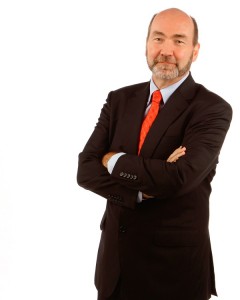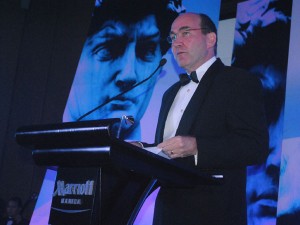Evolving insurance industry plays important role in country’s growth
MANILA, Philippines – Despite living in a country that is prone to typhoons, earthquakes, floods and volcanic eruptions, Filipinos have little awareness of the benefits of insurance, an insurance company in the Philippines said.
“The Philippines is one of the most disaster prone countries in the world,” John Casey, President and Chief Executive Officer of Blue Cross Insurance, Inc., said in an interview with INQUIRER.net.
“The Penetration rate for insurance in the Philippines is still very low, along with many other ASEAN countries like Indonesia and Vietnam, depending on the degree of economic development,” he said.
The Philippines is located on the Pacific Ring of Fire, a vast area around the Pacific Ocean where tectonic plates meet causing a lot of volcanic eruptions and earthquakes.
Typhoons are common in the country with more than 20 entering the Philippine Area of Responsibility on an annual basis, causing widespread damage.
The storms and quakes make the Philippines “an insurance company’s nightmare,” Casey said.
He added that they have clients who were in Cebu during the recent magnitude 7.2 earthquake that struck Bohol and other provinces in the Visayas region.
None of their clients were reported to have suffered injuries from the quake. More than 180 people have already been reported killed, while hundreds more were injured.
Still growing
Casey, who has spent time in the Philippines for around 30 years, says that the insurance industry is a developing and evolving market. According to data from the recent Insurance Summit, the insurance industry’s assets are valued at around P780 billion. Around 80% of the assets come from the life insurance sector, 16% from non-life and the remaining 4% from the Mutual Benefit Associations. Premium volume still has room to grow at P150.38 billion.
“[The growth of the industry] seems to go hand in hand as the economy develops, and insurance penetration increases,” Casey said.
He further explained, “The majority of our clients are from the middle and upper classes because they are the ones who are most aware of the value and need for insurance, and they are our natural clients for medical and travel insurance.”
“There are a lot of Filipinos who are moving up that socio-economic scale who are Overseas Filipino Workers (OFWs), and they have to have some insurance [when going abroad], so I think there’s a growing level of awareness now,” he added.
There is also an increase in the number of OFWs who want to have the option to provide medical insurance coverage for their family members who are back home.
The growing availability of microinsurance is also helping spread awareness to the people by making it more affordable and relevant to their needs.
“Microinsurance is strongly supported by the Insurance Commission and is a growing part of the insurance industry. While cover is simplified and modest, it is priced accordingly for people who have very little to spend on insurance,” Casey said.
Eventually, he said that as awareness on the benefits of insurance will increase, so will purchases. In addition, insurance companies “have to convince people to buy insurance, as it’s not a product that is fundamentally demand driven.”
Growth in travel insurance

People going abroad are required to get travel insurance as part of the visa application process, particularly when traveling to Schengen countries like France, Italy or Germany.
This is because in these countries, public healthcare systems do not want to be burdened with the cost of healthcare for tourists who are foreign nationals.
“It’s an additional cost and burden for that country which really shouldn’t be their burden, because these visitors are not nationals of that country,” he added.
“We anticipate that more Filipinos looking to work abroad as well as travel will continue to grow,” Casey said.
Hope for the future
Casey expressed cautious optimism about the state of healthcare in the Philippines, citing expanding PhilHealth coverage.
“There is still a long a way to go to provide comprehensive cover. I know the Philippines has PhilHealth, which has the basics of a universal healthcare system,” he said.
“The funding cost of adequate universal healthcare is high, so increased benefit levels and expansion grow alongside the development of the country as a whole,” Casey said.
Casey added, “PhilHealth is expanding, and I’m optimistic about its future. But as mentioned, a social healthcare system takes a large amount of money, so right now, the best way the private sector can support the healthcare system and take care of people is to promote the expansion of private health insurance alongside PhilHealth. Companies should consider their employees’ ability to contribute to PhilHealth and supplement it as necessary to provide comprehensive benefits.” (advt)
